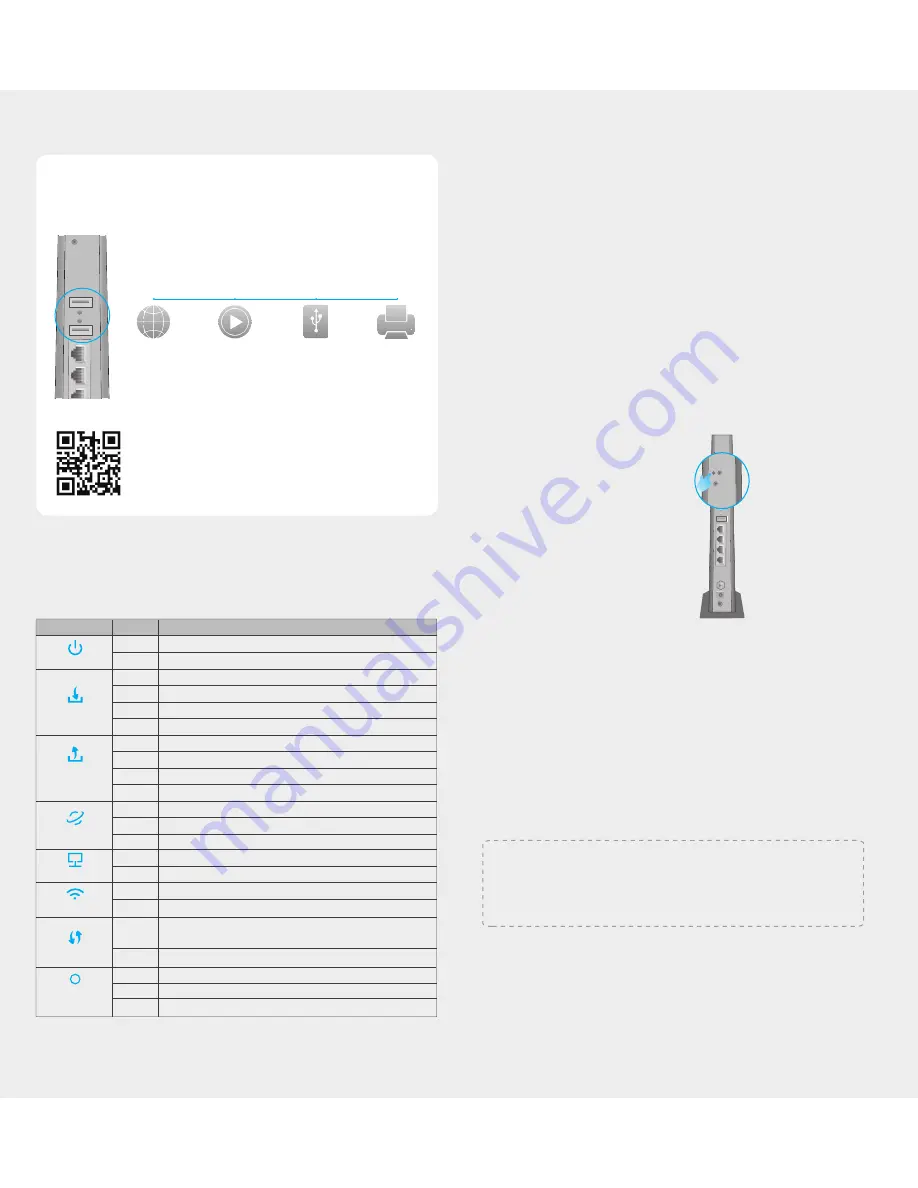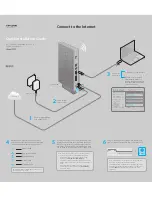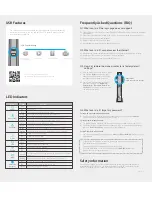
USB Features
USB Ports for Sharing
Remote Access
via FTP Server
Media Sharing
Local Storage Sharing
Printer Sharing
A
N2
LAN3
LAN4
USB1
USB2
WiFi
ON/OFF
The USB ports can be used for media sharing, storage sharing and printer sharing
across your local network. You can also set up an FTP server to access your files
remotely through the Internet.
Q1. What can I do if the login page does not appear?
Q2. What can I do if I cannot access the Internet?
Frequently Asked Questions (FAQ)
For advanced configuration, refer to the User Guide which can be downloaded at
www.tp-link/en/support/download.
Q4. What can I do if I forgot my password?
A. Restore the modem router to its factory default settings and use the default
admin
(all
lowercase) for both username and password to log in.
A1. The default Wireless Password/PIN is printed on the product label of the Archer CR700.
A2. If the default wireless password has been changed, log in to the web management page
and go to
Basic
>
Wireless
to retrieve or reset your password.
For the web management page password:
For the Guest Network password:
A. Log into the web management page and go to
Basic
>
Guest Network
to retrieve or reset
the password.
For the default wireless password:
A1. With the modem router powered on, press
and hold the
Reset
button on the rear
panel of the modem router until all LEDs
turn back on, then release the button.
Q3. How do I restore the modem router to its factory default
settings?
A2. Log in to the web management page of
the modem router. Go to
Advanced
>
System tools
>
Back up & Restore
and
click
Reset
. The modem router will restore
and reboot automatically.
Reset Button
Press and hold for 5 seconds
Power
ON/OFF
DC
Cable
LAN1
LAN2
LAN3
LAN4
USB1
USB2
WiFi
ON/OFF
Reset
WPS
WiFi
ON/OFF
Reset
WPS
A2. Contact your ISP to make sure the modem router is activated.
A1. Make sure the coaxial cable, Ethernet cable and power adapter are plugged in correctly.
A3. Contact our Technical Support if the problem persists.
A1. If the computer is set to a static or fixed IP address, change the setting to obtain an IP address
automatically.
A2. Make sure tplinkmodem.net or http://192.168.1.1 is correctly entered in the web browser.
A3. Use another web browser and try again.
A4. Reboot your Archer CR700 and try again.
A5. Disable then re-enable the network adapter being used.
To learn more about the USB features, visit
http://tp-link.com/app/usb, or simply scan the QR code.
Power is off.
Power is on.
No LAN port is connected.
At least one LAN port is connected.
The modem router is scanning for downstream channels.
The modem router is synchronized with more than one channel.
The initialization is not started, or has failed.
The modem router is synchronized with one channel.
The modem router is ranging or registering for upstream channels.
The initialization is not started, or has failed.
The modem router is synchronized with more than one channel.
The modem router is synchronized with one channel.
Internet service is not available.
Internet service is available.
The modem router is initialzing.
LED Indicators
Indication
Name
Off
Off
Off
On
White
Flashing
On
Off
Flashing
Green
White
Green
Flashing
Status
Off
On
On/Off
Flashing
No USB device is plugged in to the USB port.
The USB device is detected and ready to use.
WPS connection is in progress. This may take up to 2 minutes.
The LED stays on for 5 minutes when a WPS connection is established
before turns off.
Flashing
A USB device is being detected.
The wireless network is disabled.
The wireless network is enabled.
On
Off
Off
On
Downstream
Upstream
Online
LAN
Wireless
WPS
USB on the
rear panel
Power
For further assistance, contact Technical Support at
1-866-225-8139
or visit
www.tp-link.com/en/support/contact.
For additional FAQs, visit www.tp-link.com/en/support/faq.
©2015 TP-LINK
The product should be connected to cable distribution system that grounded (earthed) in
accordance with ANSI/NFPA 70, the National Electrical Code (NEC), in particular Section
820.93 - Grounding of Outer Conductive Shield of a Coaxial Cable.
Safety Information




















